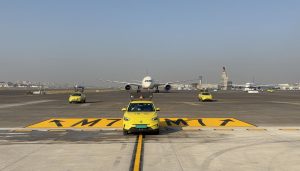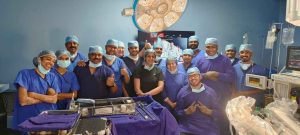Maharashtra’s TDR Policy: A Bold New Step Towards Mumbai’s Future, If Done Right

Mumbai, 30 May 2025: In a significant policy shift, the Maharashtra government has amended the Development Control and Promotional Regulations (DCPR) 2034, granting permission for the transfer of development rights (TDR) in Mumbai’s airport funnel zone. This modification, announced by Deputy Chief Minister Eknath Shinde on March 26, opens up new opportunities for urban redevelopment in regions confined by rigorous height constraints around Chhatrapati Shivaji Maharaj International Airport (CSMIA).
What is TDR?
Transfer of Development Rights (TDR) is a planning tool that allows landowners or developers to sell unused development rights from one property and transfer them to another. The system typically includes four types: slum, heritage, road, and reserved plots. It enables cities to preserve ecologically or historically sensitive areas while promoting higher-density development in designated zones.
In Mumbai, builders use TDR to exceed the standard permissible Floor Space Index (FSI) on their plots, allowing for taller or denser construction, subject to regulatory approvals and area-specific rules.
While the initiative is projected to alleviate long-standing developmental issues in certain areas, it raises various concerns about urban sustainability, infrastructure, and the risk of congestion.
The Funnel Zone Explained
Airspace surrounding Mumbai’s airport, known as the funnel zone, is essential for aircraft safety during takeoff and landing. Construction in these areas has historically been limited due to height restrictions along critical flight paths. As a result, many areas near the airport, such as Santacruz, Vile Parle, and Kurla, have been unable to capitalise on FSI, resulting in stagnant growth.
Residents in these zones have long lived in ageing, low-rise buildings facing infrastructural decay. With little scope for redevelopment, many of these properties became financially unviable. Consequently, urban planning remained largely dormant, impacting broader city development.
TDR: Unlocking Value in Height-Restricted Zones
The recent policy amendment allows for the monetisation of unused FSI in airspace-restricted zones around airports. Since height restrictions are now relaxed, developers can sell or transfer FSI that would otherwise remain unused. This shift opens a new revenue stream for developers, making previously unfeasible projects economically viable.
Residential buildings in these restricted areas, particularly those on roads narrower than 18 meters, are now eligible for increased FSI allowances, with some areas potentially qualifying for FSI up to 3.375. This increase, though still bounded by certain constraints, could significantly improve redevelopment prospects, drawing interest from developers eager to revitalise these neighbourhoods.
Learning from South Mumbai’s TDR Success
The concept of TDR is not new to Mumbai. Its implementation in the redevelopment of cessed buildings in South Mumbai has demonstrated its potential to revitalise dilapidated housing without displacing residents. Developers were able to transfer additional building rights from older structures to newer developments, breathing new life into congested urban pockets.
Though the airport’s safety regulations pose unique challenges, the policy is expected to unlock untapped potential among developers in a city grappling with housing shortages, providing a much-needed boost to supply.
Potential Benefits for Residents
The policy can improve living conditions for residents of older buildings through redevelopment that offers better sanitation, modern amenities, and larger living spaces. Importantly, residents will not bear the redevelopment cost or face displacement, as the policy safeguards their rights during transformation.
New constructions also hold potential for sustainable urban living, with practices like rainwater harvesting, energy-efficient designs, and green landscaping, benefiting both residents and the environment.
The Risks: Strain on Infrastructure and Increased Congestion
Despite being a progressive step, the policy brings concerns about worsening congestion and overstretching infrastructure. Areas around the airport are already densely populated, and a spike in development could overwhelm roads, transportation systems, and water and sewage facilities.
Traffic congestion is already a major issue, and an influx of new residents and commercial activity could intensify these problems, especially if infrastructure upgrades don’t keep pace. Without careful planning and oversight, redevelopment could also disrupt communities through temporary displacement or chaotic construction cycles.
Additionally, developers may prioritise maximising FSI benefits over preserving quality of life, raising the risk of overbuilt and overcrowded neighbourhoods.
A Balanced Approach to Urban Development
For the TDR policy to genuinely enhance housing and promote sustainable urban growth, it must be backed by integrated planning and infrastructure investment. This includes upgrading essential systems such as roads, water supply, sewage, and power.
Expanding public transport, like Metro and BRT systems, and improving pedestrian infrastructure will be key to managing increased mobility demands. Environmental safeguards should also be put in place through mandatory green building norms and sustainable construction practices.
A phased approach to redevelopment would help test feasibility and address challenges in real-time, ensuring a smoother, more sustainable transition.
To summarise, the introduction of TDR in areas near Mumbai’s airport presents a promising pathway to revitalise ageing neighbourhoods and address the city’s housing needs. However, its success hinges on responsible implementation, supported by synchronised infrastructure upgrades and thoughtful urban planning, ensuring that growth does not come at the cost of liveability.
(The article is authored by Mr. Ram Naik, Co-Founder and CEO of The Guardian Real Estate Advisory)





